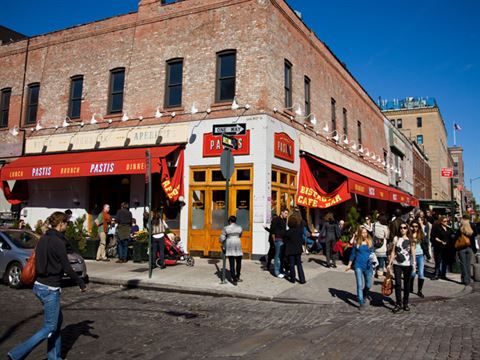We think… • October 2013
Touristy areas are becoming fashionable
Cultural critic Stephen Bayley says that the dynamic of cities means that what's hip now won't be, and what isn't will soon be
As soon as I find out where it's at, they move it. There's an essential truth in that graffito: you don't finish a city, you start it.
Living cities have a mysterious dynamic. Districts come in and go out of fashion and favour. When I first visited New York about 35 years ago, you were warned not to visit The Meatpacking District after dark. Perhaps misled by the colourful name, leather-clad dealers took advantage of its crepuscular corners and silent sidewalks and it became a grungy trade fair of gay nightclubs. Then by a process of ironic re-colonisation, high-end shops moved-in.
Today, the only danger at night is getting the spiky heels of your friend's Louboutins stuck in the romantic cobbles. The Meatpacking District now has a landmark Keith McNally restaurant, a hipster hotel and the cleverest example of architectural creative re-use on the planet: the High Line linear park, a rescued and greened overhead railway.

New York's Meatpacking District is home to Keith McNally's landmark Pastis restaurant
The same happened in London's Covent Garden: fruit and veg gave way to ad agencies, Terence Conran's Neal Street Restaurant and design studios as well as Paul Smith's first London shop. Then the tourists came and high street ciphers to service them followed. The scenesters moved out and the area was abandoned to the suburban voyeur. But it's change again: Keith McNally's Balthazar, translated from New York, marked the prodigal's return. The presence of McNally is a sure indicator of progress. Any minute now, Covent Garden will be re-possessed.
Then there is Carnaby Street, where experiments with flared trousers and tie-dye led to the swinging sixties. But Carnaby Street soon became a travesty inside a caricature inside a parody. It was to be avoided as if a vast urban dog mess. But about four years ago, seeing its underrated charm, I stepped in it by moving my office here. Things change.
